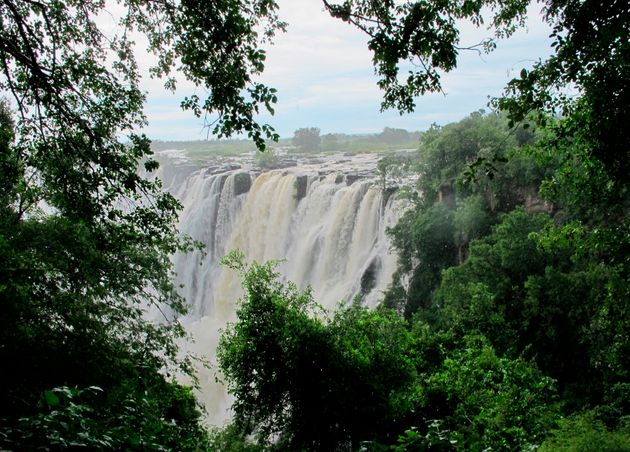
Victoria Falls – one of the seven natural wonders of the world – has long welcomed millions of tourists drawn in by the spectacle of the Zambezi river cascading into a huge gorge.
But the arrival of the worst drought in a century has reduced the usual torrents of water to little more than a trickle, fuelling fears that climate change could destroy the attraction, which borders Zimbabwe and Zambia.
It’s currently the dry season in the region and it’s not unusual for the waters to slow, but this year officials have declared an unprecedented decline in the water level.
Stretches of the kilometre-long natural wonder are currently nothing but dry stone.
“In previous years, when it gets dry, it’s not to this extent. This [is] our first experience of seeing it like this,” Dominic Nyambe, a seller of tourist handicrafts in his 30s said outside his shop in Livingstone, on the Zambian side.
“It affects us, because… clients… can see on the internet [that the falls are low]… We don’t have so many tourists.”

As world leaders gather in Madrid for the COP25 to discuss ways to halt catastrophic warming caused by human-driven greenhouse gas emissions, southern Africa is already suffering some of its worst effects ― with taps running dry and some 45 million people in need of food aid amid crop failures.
Zimbabwe and Zambia have suffered power cuts as they are heavily reliant on hydropower from plants at the Kariba Dam which is on the Zambezi river upstream of the waterfalls.
Data from the Zambezi River Authority shows water flow at its lowest since 1995, and well under the long term average. Zambian president Edgar Lungu has called it “a stark reminder of what climate change is doing to our environment”.
Yet scientists are cautious about categorically blaming climate change, as there is always seasonal variation in levels.
Harald Kling, hydrologist at engineering firm Poyry and a Zambezi river expert, said climate science deals in decades, not particular years, “so it’s sometimes difficult to say this is because of climate change because droughts have always occurred”.
“If they become more frequent, then you can start saying, ok, this may be climate change,” he added.
He said early climate models had predicted more frequent dry years in the Zambezi basin, but that “what was surprising was that it [drought] has been so frequent” ― the last drought was only three years ago. As the river gets hotter, 437 million cubic metres of water are evaporating every second, he said.
In Livingstone this week, four tourists stared into a mostly dry chasm normally gushing with white water. German student Benjamin Konig was disappointed.
“Seems to be not much [water], a few rocky stones with a little water between it,” he said.
Whilst the northern hemisphere experienced record-breaking temperatures during summer 2019, the southern half of the globe also experienced an unusually warm summer.
Richard Beilfuss, head of the International Crane Foundation, who has studied the Zambezi for the past three decades, thinks climate change is delaying the monsoon, “concentrating rain in bigger events which are then much harder to store, and a much longer, excruciating dry season”.